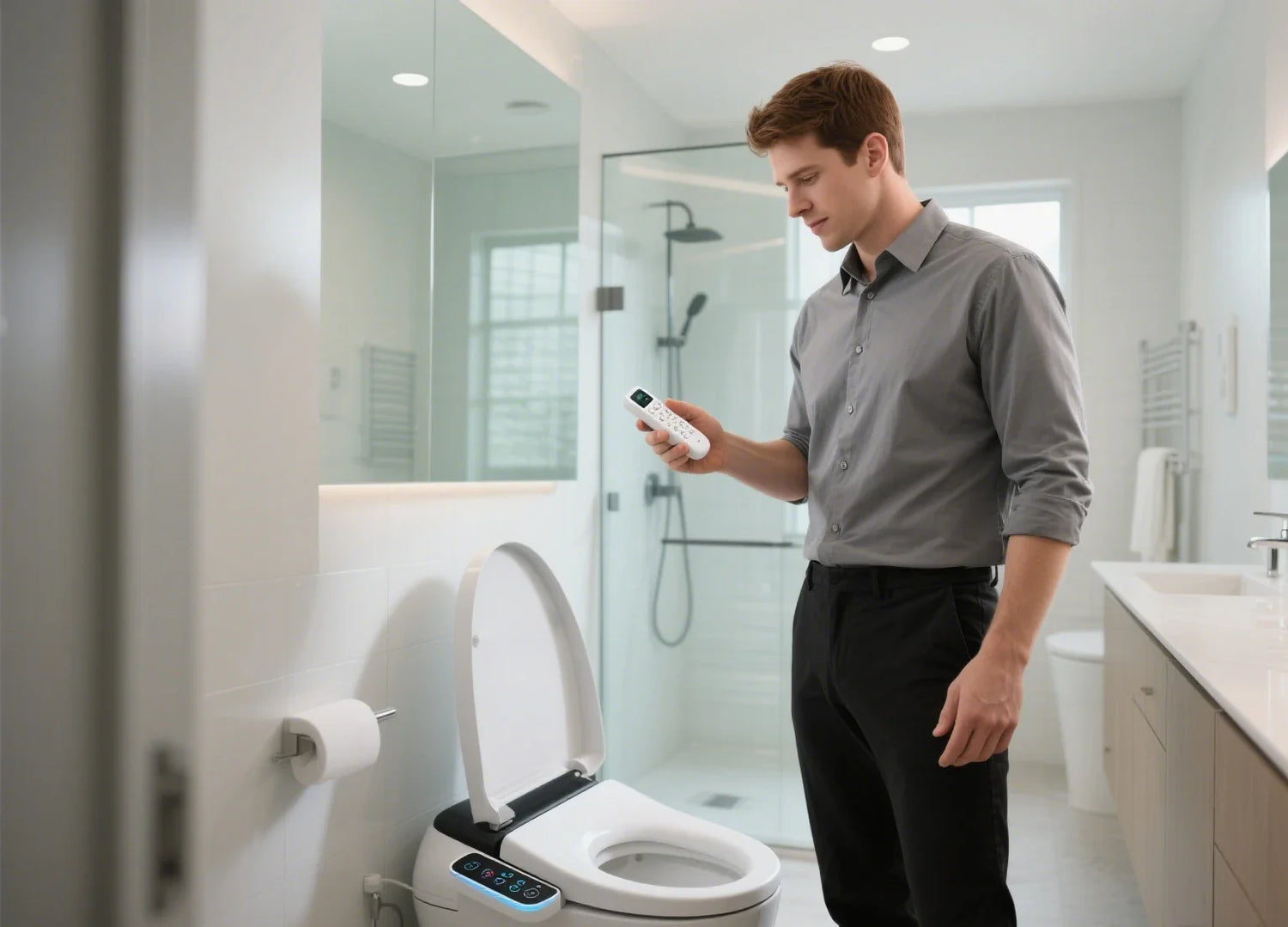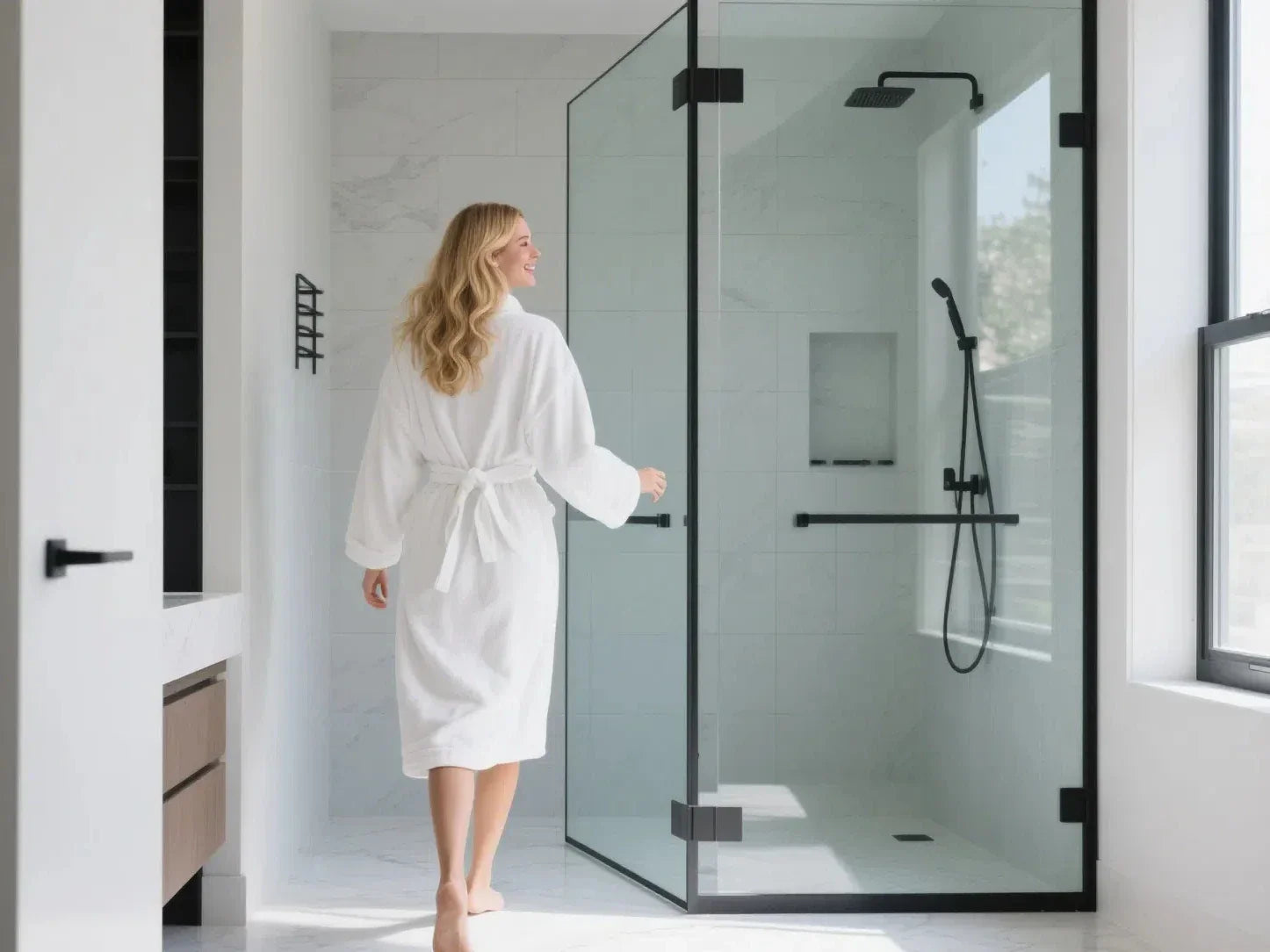The inquiry of do bidets need electricity has become increasingly important in todays world of bathroom technology advancements. Whether you are renovating a smart bathroom or just enhancing your toilet setup with a bidet attachment or seat upgrade. Comprehending the electrical demands of bidets is crucial. This comprehensive guide discusses options ranging from traditional non electric bidets to more advanced electronic models that offer features, like warm water cleansing and heated seats.

Understanding Bidets and Their Power Requirements
When considering the decision, between electric bidets options that are not powered by electricity it's important to understand the real essence of a bidet and how it functions works. Bidets provide an alternative to traditional toilet paper by providing a jet of water for post toilet cleansing purposes rather than relying solely on toilet paper. While some bidet models are attachments others come with electronic functionalities that greatly enhance user comfort. This leads to the common question: "Do bidets need electricity?" It all comes down to the type of bidet you're thinking about getting! Non electric bidets work just using water pressure without needing any electricity all – this makes them cost effective and environmentally friendly options to consider. On the side of things are electric bidets which come with extra luxuries like heated seats and customizable water temperatures; however they do need a power supply to work properly. Knowing these differences is essential in answering the question“do bidets need electricity”.
What is a Bidet? Basic Functions and Types
A bidet is a bathroom fixture or attachment that sprays water to cleanse after toilet use. Basic bidets can be standalone fixtures, bidet seats, or simple attachments mounted to existing toilets. When discussing the choice between non-electric bidets, it's crucial to grasp the true nature of a bidet and how it operates. Many people often ask, "Do bidets need electricity?" The answer largely depends on the type of bidet you are considering. There are two primary types: electric bidet seats and non-electric bidet attachments. Each type of bidet provides varying levels of comfort and features, and some bidet models even include a warm air dryer, adjustable water temperature, and a heated seat.
Electric vs. Non-Electric Bidets: Key Differences
Do bidets need electricity? To figure out why a lot of bidets need electricity to work properly like seats and warm water sprays or air drying features in electric bidet toilet seats it's important to compare them with non electric bidets which rely on basic mechanical systems and water pressure instead of electricity to function efficiently. Electric bidets typically depend on a GFCI outlet for safety reasons and might need an electrician, for installation to comply with local electrical regulations.
Common Misconceptions About Bidet Power Needs
Do bidets need electricity? Many people mistakenly believe that every bidet relies on electricity to function properly; however non electric bidets can offer water cleansing capabilities without the need for a power source. It's important to note that features such as customizable water temperature settings, nozzle positioning presets or the warm air feature found in certain bidets do indeed require electricity. By recognizing these distinctions consumers can make decisions when selecting the ideal bidet seat for their bathroom space.

Installing a Bidet Without Electricity
Do bidets need electricity? it's possible to install a bidet without electricity. There are options available beyond what you may expect. A lot of people choose electric bidet attachments for their straightforwardness and affordability in addition, to being easy to set up. How exactly do they function and do they work well in practice? Lets delve into these questions together.
Do bidets need electricity?
When it comes to the question do bidets need electricity, the answer is not really. You can definitely set up a electric bidet without electricity! These gadgets usually link to your current water supply line and are controlled by manual levers or dials instead of electricity. So no need to fret about cables or power consumption or having an outlet close to your toilet bowl! While they may not have perks like a heated seat or warm air functions, like some pricier options do; they are a wallet friendly and environmentally conscious choice.
How Does a Bidet Heat Water Without Electricity?
After answering the question that do bidets need electricity, we need to figure out how does a bidet heat water without electricity. Certain bidet models that do not rely on electricity can be connected to both cold water lines for manually adjusting the temperature to achieve warmth based on your bathrooms plumbing setup and the proximity of a hot water source to your toilet. In the absence of electricity for heating capability; only the current water temperature flowing through your pipes is accessible, in such setups which are typically seen in bidet installations with suitable plumbing configurations.
Are Non-Electric Bidets Worth It?
Do bidets need electricity necessarily? Are Non-Electric Bidets Worth It? Even though non electric bidets don't have features such as a heated seat or warm air drying options like their high end counterparts do; they are still quite effective in their functionality. People often commend these bidets for being long lasting and easy to maintain while being user friendly too. If practicality is more important to you, than luxury and comfort; then opting for a electric bidet seat might be the way to go. For those wondering if bidets require electricity; these models demonstrate that the answer can indeed be negative.
Are There Battery-Powered Bidets?
Yes, a few bidet models operate using batteries, providing a middle ground between electric and non-electric types. A heated toilet seat battery operated version offers limited features like nozzle cleaning or remote control functions. Though they eliminate the need for a power outlet, their functionality is usually limited compared to full electric bidets. Battery-powered bidets may be ideal for travel or temporary installations.
Electrical Requirements for Electric Bidets
Exploring the aspects of using electric bidets involves a deeper dive into the topic for both homeowners and renters who have questions not only about whether bidets require electricity but also about the specific electrical setup needed for them to function properly and safely in alignment with building regulations and standards, beyond simply plugging them in.
Do You Need a Power Point for a Bidet?
Sure thing! If you're thinking about putting in a bidet or bidet toilet seat at home you'll need to have a power outlet nearby – preferably one with a GFCI outlet for safetys sake.This kind of outlet is made to cut off the power if theres any water presentor if the electricity flow isn't normal which is super important in bathrooms.See,because features, like a toilet seat,warm water spray and warm air dryer all rely on electricity to work properly having a steady power source is absolutely essential.
Electric bidet seats usually need a 110V electrical outlet and consume a moderate amount of power ranging from 600 to 1400 watts based on the model you choose to go with. It's important to verify the power consumption and electrical needs of your specific product. Certain premium tankless bidet models might demand energy levels particularly if they come with features, like instantaneous water heating or constant warm air drying. To ensure safety and peak efficiency of your electric bidet seat usage it's advisable not to plug it into a circuit shared with high power appliances such, as hair dryers or space heaters.
Can You Use a Bidet During Power Outages?
Using a bidet when theres a power outage depends on the kind of bidet seat you have. Ones won't work without power and you'll miss out on features like warm water and adjustable nozzels during those times which can be inconvenient if power outages are common, in your area.
Alternatively, electric bidet attachments or bidet seats do not need electricity to work.These versions utilize the water pressure from your homes current water supply, for operation.Even in a power outage, they will keep spraying water efficiently. Though they may lack warm water or a heated seat, they offer reassurance by allowing you to uphold cleanliness no matter the power situation.That's why lots of people opt for installing a bidet as a secondary option, in places where the power supply isn't always reliable.
Health, Hygiene, and Practical Concerns
Embracing a bidet isn't about indulgence. It's a significant enhancement in cleanliness and convenience that many individuals appreciate for personal health reasons when transitioning to bidet toilet seats for the first time. Whether contemplating a non electric bidet add on or an advanced electric bidet toilet seat upgrade option; recognizing the health advantages and potential issues is vital, for making a well informed decision.
Are Bidets Sanitary for Females?
Indeed! Bidets can be particularly beneficial for women when it comes to hygiene compared to relying on toilet paper usage alone. For women going through menstruation periods or dealing with pregnancy or postpartum healing processes. Well as for regular daily use. Electric bidet seats equipped with a feminine wash function provide a gentler and more comprehensive cleaning experience. These functionalities often consist of water pressure settings and temperature control for warm water preferences, alongside specially crafted nozzles angled towards delicate areas for precise cleansing.
Bidet toilets are known to minimize irritation and lower the chances of infection by removing friction during wiping tasks—a benefit that's particularly advantageous for women with a predisposition, to UTIs or skin sensitivities according to numerous gynecologists who advocate for bidet use to promote better hygiene and comfort.

Are Bidets Bad for Your Stomach?
This is a common myth with no medical basis. Bidet seats, whether electric or non-electric, clean the external area only—they do not affect internal organs or digestion in any way. There is no connection between using a bidet toilet seat and your stomach health.
In fact, if anything, warm water bidets can ease physical discomfort for individuals dealing with hemorrhoids, anal fissures, or postpartum soreness. The gentle, water-based cleaning process is often far less irritating than repeated wiping with dry or scented toilet paper.

Can a Cold Water Bidet Cause Hemorrhoids?
Certainly not so! Cold water bidets can be a bit unsettling for individuals, with existing hemorrhoids or heightened skin sensitivity—particularly the simpler non electric versions. Nonetheless there is no medical data supporting the idea that cold water directly causes hemorrhoids; the unease experienced is typically attributed to individual sensitivity rather than posing any significant health risk.
If you're concerned about temperature, opting for an electric bidet seat with customizable settings can make a world of difference. For example, the HOROW bidet features an adjustable heated seat, customizable water temperature and pressure, and a self-cleaning nozzle—ideal for users who need soothing relief and gentle cleansing. It even includes a built-in mood light to enhance nighttime use, adding a touch of modern comfort to your bathroom. Choosing a bidet like the T38 can greatly improve hygiene while offering a spa-like experience for sensitive users.

FAQ
1. Do bidets need electricity, can you install a bidet without electricity?
A bidet can be set up without electricity. Used without electricity in some cases. Non electric bidet options like bidet attachments and handheld sprayers are easy to install. Just need to connect to the water supply. They usually fit under your toilet seat or link to the water line with a T valve. These types operate based on water pressure and manual adjustments. No need, for batteries or electrical sockets. They work well for properties and budget friendly renovations or houses that don't have GFCIs located close, to the bathroom.
2. How does a bidet heat water without electricity?
Non-electric bidets can't "heat" water in the same way electric models can, but some are capable of accessing warm water through your home's plumbing. These bidets often connect to both hot and cold water supply lines, allowing users to mix water manually using built-in dials. However, this setup depends on having a hot water line near the toilet, which many bathrooms lack. Even in these cases, there is no instant or controlled heating—just the temperature that comes from the plumbing. As a result, the water may be lukewarm at best, and there is a delay as the warm water travels from the source.
3. Do you need a power point for a bidet?
If you're setting up an electric bidet seat at home or anywhere else for that matter you'll certainly require a power source nearby. A GFCI (ground fault circuit interrupter) outlet.This kind of bidet comes with features like a heated seat,adjustable nozzle positions,warm water and even air dryers. All of which rely on electricity to operate.Most electric bidet seats will need a 110V outlet and some more advanced models might come with higher power needs or recommend having their own dedicated circuit, for optimal performance. You need to have a power source, for the model to work; therefore, having an appropriate electrical outlet is crucial when setting it up.
4. Are non-electric bidets worth it?
Certainly! It depends based upon what you're looking for in a bidet system.Non electric bidets are quite popular due to their cost effectiveness,ease of setup and minimal upkeep.While they may not include functions such as heated seats or adjustable water temperatures they do provide efficient cleaning through a basic water stream.These bidets are ideal for conscious individuals seeking to cut down toilet paper usage or for those residing in regions susceptible, to power interruptions. Many people discover that manual bidets offer cleanliness at a lower cost and energy usage compared to electric ones.
5. Are there battery-powered bidets?
Yes, though they are less common than electric and non-electric models. Battery-powered bidets usually fall into the category of travel or portable bidets, and some advanced attachments or seats also use batteries to power remote controls or minimal electronic functions like LED indicators. A heated toilet seat battery operated option may offer limited heating capacity but will not match the features of fully electric bidet toilet seats. These models are ideal for temporary setups, RVs, or situations where access to an electrical outlet is not feasible but some convenience features are still desired.
6. Can a cold water bidet cause hemorrhoids?
Cold water alone doesn't directly lead to the development of hemorrhoids; however it could potentially aggravate existing ones. For people with skin or existing hemorrhoids conditions using cold water might not be the most pleasant experience particularly in colder environments or during winter season. Nevertheless many individuals discover that they experience relief from their symptoms by utilizing a flow of water rather than rough toilet paper. Electric bidets that offer the option to adjust the water temperature can offer a comforting and soothing experience, for such individuals. Consider getting a bidet with warm water features to enhance comfort and hygiene if you're worried, about hemorrhoids or irritation.
7. In Japan, do bidets need electricity?
Certainly! Japanese toilets known as washlet bidets are highly advanced and packed with features that depend heavily on electricity for operation. These all in one bidet toilet units offer a variety of functions such as water cleansing, heated seats, air dryers, automatic lid openers and deodorization systems. Each of these functions requires a power supply. In addition to these features many Japanese toilets also come with sensors and customizable settings to tailor the experience to preferences emphasizing the necessity of having access, to electricity for their proper functioning.
8. Is there a downside to using a bidet?
Although bidets come with advantages there are a few disadvantages that need to be taken into account. Electric versions necessitate a power source, which could mean electrical work like setting up an outlet close, to the toilet or making sure the seat is connected to a shared or dedicated circuit. There is also an expense especially for top of the line electric bidet seats. The upkeep and repair of components might contribute to ongoing expenses. Furthermore some individuals may experience a learning curve when transitioning to using a bidet instead of traditional toilet paper. Despite these problems mentioned on the majority of users believe that the benefits outweigh the drawbacks significantly.
9. Are bidets sanitary for females?
Yes, bidets are often more sanitary for females than traditional toilet paper. Many electric bidet seats include a feminine wash mode, which uses a gentler stream of water aimed specifically for female hygiene. This can be particularly helpful during menstruation, pregnancy, postpartum recovery, or for individuals with sensitive skin. Bidets reduce the need for physical contact, thereby lowering the risk of irritation or infection. As long as the nozzle and the bidet seat are kept clean—many models have self-cleaning nozzles—they offer a hygienic and safe experience for all users.
10. Are bidets bad for your stomach?
Nope! Bidets don't do anything to your stomach all! This misconception probably comes from mixing up the idea of cleaning inside and outside parts of your body.It's good to know that bidets are for cleaning your backside and private areas with a gentle stream of water. They don't have any impact, on how your digestion works or the health of your internal organs at all! Actually for people dealing with issues that make them visit the bathroom often using a bidet can make things much more comfortable and hygienic by reducing the irritation caused by constant wiping. Therefore utilizing a bidet is not just good for your digestion. Can also elevate your entire bathroom routine.








Leave a comment
This site is protected by hCaptcha and the hCaptcha Privacy Policy and Terms of Service apply.